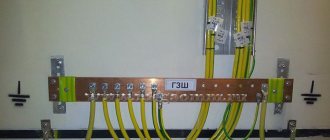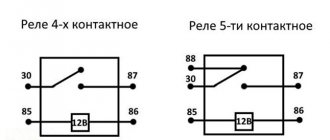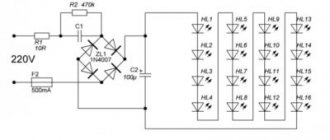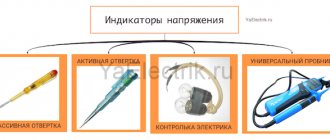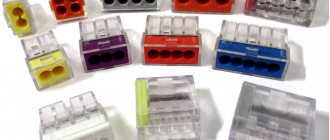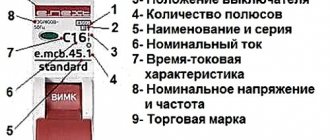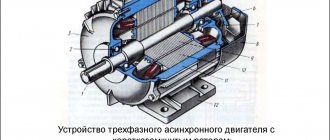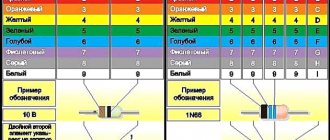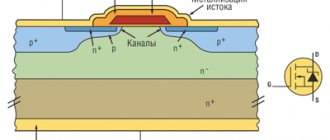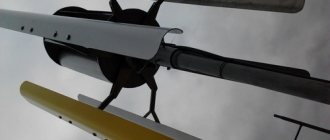Electrical contacts in a car naturally create an unfavorable environment. Even though car connectors have rubber seals in the housing, moisture still gets inside.
Even copper-containing contacts are susceptible to corrosion. This does not mean that the metal petal can be mechanically destroyed. However, a thin layer of oxides forms on the working surfaces, the resistance of which is much higher than that of metal. As a result, a failure occurs in the transmission of the control signal, or even worse: the power lines begin to spark at the point of contact, which leads to burning of the petals. Minimal losses - the device stops working. In the most advanced cases, a fire may occur.
What is paste used for?
Back in the second half of the 20th century, scientists calculated that electricity losses in all areas of production amounted to up to 10% of total electricity consumption. This value increases as equipment ages and wiring wears out.
The simplest way to reduce losses to a minimum without serious financial costs was the use of special electrically conductive means. There is no need to repair equipment or replace wiring.
Electrical contacts have their own service life. And it contracts when the transition contact resistance changes. When exposed to electricity, the junction of the wires begins to heat up. This can even lead to fires. Statistics say that in 10% of cases, industrial accidents occur precisely because of the destruction of electrical network contacts. And destruction of this kind occurs precisely due to exceeding the limit of electrical resistance.
For the treatment of contacts, the standards provide for substances such as lithol, cyatim, and technical petroleum jelly. They all have a fat base. Due to this, such products melt and burn out, leaving the contact unprotected. As a replacement, conductive contact paste has recently been increasingly used.
How to lubricate battery terminals
The process of lubrication of terminals consists of cleaning parts from oxidation products, followed by treating them with lubricants and is carried out in the following order:
- We remove the terminals.
- We remove oxidation products with a brush or felt soaked in a soda solution. If the oxidation process started a long time ago, it is necessary to use a terminal brush.
- Rinse with distilled water.
- We tighten the terminals.
- We process with the selected tool.
How to clean terminals
- Had tried. Remove the layer of oxidation products. Acid-resistant, very convenient for removing oxidation products. It will also be useful if you protect the battery terminals from oxidation with felt washers soaked in one or another lubricant. It is worth mentioning only such devices as a toothbrush and a sponge for washing dishes - they will help if oxidative processes have just begun or you are taking planned preventive measures.
- A weak solution of sodium bicarbonate. Proper removal of oxidation underlies the fact that the white deposits will not need to be removed again anytime soon. You may need about 250 ml of solution: add about one and a half tablespoons of soda to this volume of hot distilled water.
- Sandpaper. It is recommended to use fine-grit sandpaper. Although it wears out quickly, it does not leave abrasive particles on the treated surfaces.
- Brushes with metal bristles from companies such as OSBORN ECO and so on. Their body is made of high quality wood and has a hole for a handle.
- The brushes are a double-sided device, which makes the work much easier, and a drill will also make it quick. When choosing, preference can be given to products from such manufacturers as Autoprofi, JTC (model 1261), Toptul (model JDBV3984), Force.
- Terminal scraper. They can be sanded by hand, but it is much easier than sandpaper.
Terminal scraper
Wire brush
Often it is necessary to carry out more precise stripping, which will require a cordless drill with a stainless steel attachment.”
The terminals must be cleaned at a speed of no more than 15,000 rpm. And under no circumstances increase the pressure! Cleaning the leads of oxides may take longer, but it is necessary.
Before purchasing the tool kit below, determine how well the terminal oxidation process is going. If there is no plaque yet, or it is barely noticeable, slightly abrasive products are enough, sometimes felt and soda solution are enough to prepare the parts for subsequent processing.
Causes, consequences and elimination of terminal oxidation
In other, more serious cases, you should use highly effective products and products that not only clean out traces of oxidative processes well, but also save your time and effort.
Summarizing
Since the battery terminals are exposed to the damaging effects of electrolyte vapor and oxygen, and the resulting oxidation products negatively affect the battery's performance, it must be protected from such influences. And the only main question is how to do this, how to lubricate the battery terminals? And the answer is obvious: the composition that protected against moisture was conductive and capable of eliminating stray currents. All these properties are present in the lubricants we are considering. You just need to apply them in advance, and not when the terminals are no longer visible behind the white coating.
see also
One of the main problems that must be solved to increase the service life of electrical equipment is maintaining the operation of electrical contacts. One of the most common problems in this case is failure of connections and destruction of contacts under the influence of moisture, high temperatures, and aggressive environmental components.
To increase the reliability and stability of electrical appliances, it is necessary to protect terminals, relay contacts, batteries, sensors, plugs, sockets, terminal blocks, prevent current leakage and completely block the possibility of chemical liquids and moisture entering the electrical network contacts. For the assigned tasks, lubricants for electrical contacts are used.
General concept
Conductive paste allows you to increase the service life of electrical wiring contacts to seven years. It reduces by half the value of the transition resistance at the electrical contact points. This product works at temperatures up to 350-4000 degrees. In such conditions, it allows you to preserve all the functional features of contact connections.
There is a separate type of product called anti-corrosion conductive paste. In addition to the main tasks of reducing contact resistance, it protects contacts from moisture and aggressive environments.
Electrically conductive lubricants also perform an energy-saving function. Experts have calculated that using just 1 kg of the product can save up to 100 thousand kW of electricity per year.
Classification
Electrically conductive paste has two types. They differ from each other in the way they influence contacts:
- Passive (also called neutral) is a kind of prophylactic agent that will protect against oxidation of contacts under the influence of atmospheric oxygen. This group includes KVT contact conductive paste.
- Active does not affect the metal of the wires, but has an effect on oxidized areas located on the surface.
Conclusion
Based on everything written above, we can come to the conclusion that the use of specialized lubricants for contacts and locks in a car is not only desirable, but in some cases even necessary. However, it is still worth exercising a certain amount of vigilance in order to notice the problem in the early stages and be able to prevent it before it is too late.
Monitor the cleanliness and general condition of the contacts under the hood, look closely and listen to the operation of all the devices in your car, take care of the locks and do not trigger any detected faults.
This is the only way to guarantee that the lubricant will provide really good help.
Using the product
Conductive paste is easy to use. First of all, the surface on which the product will be applied must be degreased and dried.
Next, the pasta itself is prepared. As a rule, it consists of two components: powder with the addition of metal, liquid for diluting the powder. Therefore, the components need to be connected. This is done in a dry container. You can even do it on cardboard if the quantity is small. The consistency of the paste should resemble toothpaste.
Gentle cleaning methods
Many motorists have empirically found the most effective ways to clean battery terminals. It does not require any special physical effort. This problem can be solved with the help of improvised materials, household chemicals and even medicines.
Soda
When using a car over time, the terminals are corroded by the electrolyte that gets on them. This promotes the formation of rust and sulfates on the surface of the joints. To get rid of acid residues, it is recommended to use a soda solution, for the preparation of which you need to dissolve a tablespoon of soda in a glass of warm water.
Here it is important to generously treat the contacts with liquid, and then thoroughly brush the surfaces
This procedure must be carried out in the following order:
- first remove the negative and then the positive cable from the battery;
- wrap the terminals with a cloth soaked in soda solution, lower the terminals on the wires inside the containers for about 20 minutes;
- remove rust on contacts;
- prepare a fresh soda solution and soak the terminals in it again;
- Clean the contacts with water, wipe with a damp cloth, and let dry.
Apply a small amount of Vaseline or other protective lubricant, connect the positive terminal first, and then the negative terminal.
Sandpaper, wire brush
White deposits on battery terminals are lead that has oxidized. To ensure better electrical conductivity, it is better to clean the metal of all oxides. In this case, a mechanical method is suitable. For this you will need regular coarse sandpaper.
The cleaning procedure itself is simple. You just need to clean the battery poles and terminals until they are shiny.
Gasoline
This method should be used with extreme caution, since gasoline, if it comes into contact with rubber or plastic elements, can corrode them. On the other hand, this type of automobile fuel copes well with oxides, destroying them to metal
The methods described above are the most effective and simple. Even a novice motorist can solve the problem using one of these methods.
Making your own pasta
Conductive paste is commercially available in a wide range from various manufacturers. But you can also make it yourself.
The main component of the glue is synthetic resin. It does not conduct electricity in its pure form. Therefore, particles of metals - gold, copper, silver, nickel - are added to it. To ensure good electrical conductivity, the powder volume must be at least 70%.
Silver is most often used. This choice is based only on the economic side of the issue. The simplest and cheapest way to obtain it is through the chemical reaction of formaldehyde reduction. To do this, take one part of silver nitrate and one part of formaldehyde (1%). Their mixture is heated to a temperature of 80 degrees. After this, ammonia (5%) is added there. As a result of the reaction, a dark-colored silver precipitate will fall to the bottom. This precipitate is filtered, washed and dried.
When all the ingredients are ready, you can prepare the pasta. To do this, combine 100 grams of epoxy resin, 250 grams of silver powder, 10 grams of dibutyl flate (to give the resin a more liquid consistency). Before use, add 10 grams of polyethylene polyamine as a hardener. Without it, the mixture can be stored indefinitely.
You can increase the electrical conductivity of the paste if you dry it after application at elevated temperatures (up to 100 degrees).
Electrically conductive substances are chemical substances that must be handled in compliance with basic safety rules. The paste should not come into contact with the skin and mucous membranes. If this happens, wash thoroughly with warm water and soap.
Electrical contacts in a car naturally create an unfavorable environment. Even though car connectors have rubber seals in the housing, moisture still gets inside.
Even copper-containing contacts are susceptible to corrosion. This does not mean that the metal petal can be mechanically destroyed. However, a thin layer of oxides forms on the working surfaces, the resistance of which is much higher than that of metal.
As a result, a failure occurs in the transmission of the control signal, or even worse: the power lines begin to spark at the point of contact, which leads to burning of the petals. Minimal losses - the device stops working. In the most advanced cases, a fire may occur.
Is it worth using
While some are thinking about which flushing oils would be best to use, others strongly doubt the need to use them. Therefore, this question also needs to be answered.
The main competitor of flushing oil (FU) is the so-called five-minute oil. But against its background, PM has a number of obvious advantages. The main one is a safer and gentler effect on the internal components of the internal combustion engine.
Most five-minutes use the most aggressive components in their composition. These solvents actually wash away old grease residues and other contaminants. But at the same time, oil seals and seals are destroyed, a negative effect on the metal is observed, and the likelihood of the development of oxidation processes and the formation of rust spots increases.
Another argument against five minutes is the fact that when drained, some of these aggressive liquids remain inside. When mixed with new oil intended for constant use and operation of the car, the composition of the lubricant changes. And not always for the better.
In practice, you can do without flushing oils. But then there is a possibility of encountering negative consequences for the power unit. The thing is that when filling in new lubricant, it mixes with the remnants of the old one, as well as with the contaminants, carbon deposits and suspensions accumulated in the crankcase. This instantly changes the characteristics and physical and chemical properties of the fresh fluid, reduces its service life, clogs the oil filter and shortens the service interval.
There are several conditions under which flushing oils may not be used:
- you bought a new car;
- Previously, the oil was changed strictly according to regulations and as needed;
- when replacing, compositions recommended by the manufacturer or of higher quality were used;
- over all the years of service, poor quality oil has never entered the engine crankcase;
- compounds of different brands or with different characteristics were never mixed in the engine.
When even one of the conditions is not met, preventive flushing is recommended.
Experts and experienced motorists advise that you definitely use high-quality flushing oil if:
- The car was purchased second hand and its service history is questionable.
- Clear signs of sediment accumulation have formed in the upper part of the internal combustion engine.
- You need to switch from one type of oil to another.
- The machine was subjected to heavy loads and operated in difficult conditions.
- The internal combustion engine was recently overhauled.
Even if you practice using inexpensive and not the highest quality oils, flushing as a preventative measure definitely won’t hurt.
What is conductive contact grease?
In fact, it is an ordinary component substance of plastic consistency, with special additives. Mineral oil is used as a base.
To increase the viscosity, an additive is added: it can be ethylcellulose, which contains salts of high molecular weight compounds (essentially the same soap).
Sometimes higher organic acids are added. A stabilizing component must be introduced: an acetone solution of benzotriazole.
But this contact lubricant is not electrically conductive. It simply protects the connector from corrosion. Therefore, highly dispersed (finely ground) copper powder is added to the plastic mass.
It has a characteristic color and is actually a conductor of electricity. The principle of operation is simple: when applied correctly, the conductive contact grease fills all the microvoids in the connection and expands the interaction spot.
Since the composition is plastic, the connections do not break during vibration, and the electric current flows without interruption. In addition, protection against corrosion is provided at the application site.
Another option: graphite-based automotive electrical conductive contact lubricant. The composition of the base is similar, mineral oil with the addition of stabilizers and thickeners.
Only finely ground graphite is used as a conductive medium. The electrical conductivity of the material is almost as good as that of a copper additive, but the cost of such a lubricant is significantly lower. It doesn’t look as aesthetically pleasing, but it’s not a decorative element.
Just like copper, graphite paste not only provides reliable contact, but also protects against moisture penetration and corrosion when in contact with air.
Advantages and disadvantages of conductive compounds
- We have already looked at the strengths. Protection from external influences, reliable contact during vibration, easier opening of the connector (electrical conductivity has nothing to do with it, in any case it’s a lubricant). Another advantage is that the conductive paste in some cases can act as a separating layer between dissimilar metals. For example, when copper and aluminum are directly connected, an electrochemical reaction occurs and the metals rapidly corrode. A layer of paste reduces the negative impact. Application of lubricant for electrical contacts
- The disadvantages include the possibility of short circuiting. If the connector is tight enough, the paste may short out nearby contacts. It is clear that at high current values, the lubricant will simply evaporate: but a fire may also occur. In this case, a fuse will help. And if you close the low-current signal contacts, then in the best case, the electronic modules will not execute commands, and in the worst case, the element base will fail.
Copper
Copper grease is perhaps the most common of all types of grease. It is intended to protect threaded connections from corrosion. In particular, it is used to lubricate exhaust manifold studs and wheel hubs. Since it is made of copper and has good electrical conductivity, it can be used to lubricate electrical contacts. It is worth noting that copper grease corrodes aluminum, so it should never be used where it will come into contact with aluminum parts, such as on wheel hubs if you are using aluminum alloy wheels.
General rules for applying lubricant to contacts
- the cavities inside the connector should be cleaned of dust, moisture, and dried;
- If possible, the male contacts should be cleaned with fine sandpaper and sawdust should be removed;
- female type contacts are cleaned with a file, a needle, or a narrow strip of sandpaper.
The metal parts are then coated with a thin layer of lubricant. If the paste is not conductive, you can apply it to all internal surfaces for 100% protection against moisture penetration. External contacts (such as battery terminals) are also coated on the outside.
Of course, the lubricant does not last forever; it must be washed off and reapplied at least once a year.
Premium quality insulating tape 3M Scotch™ Super 88
It is a high-quality polyvinyl chloride insulating tape with a thickness of 0.22 mm, suitable for use in any environmental conditions. The tape is intended for continuous use at ambient temperatures up to +105°C. Scotch™ Super 88 is highly resistant to abrasion, moisture, alkalis, acids, corrosion and changing environmental conditions (including exposure to ultraviolet radiation). Operating temperature from minus 40 to plus 105 ° C. Its properties are reminiscent of native Toyota electrical tape, anyone who has unwound it knows how difficult it is to wash your hands of it :) The only downside is perhaps the price.
For poking around in the pref block, KVT PK-16 press pliers were purchased for crimping non-insulated tips and sleeves
Conductive paste KVT
Provides long-term protection of the electrical contact from various physical and chemical processes occurring during operation, reduces the electrical resistance of the contact, increases the contact surface, stabilizes the temperature regime of the contact connection, and when using conductive contact paste, it becomes possible to use an aluminum tip on a copper cable. Increases the service life of electrical contacts and reduces labor costs for repairs and maintenance of electrical networks. Ingredients: mineral oil, thickeners, electrically conductive composition. Operating temperature: -40 to +100° C.
To bring beauty under the hood, IPROTEX braid was purchased
. She's snakeskin.
Designed to separate cable bundles inside switchboard equipment. Provides protection against chafing and side cuts. Resistant to gasoline, oils, antifreeze. Operating temperature: from -55 to +150 °C. Material: polyester. Black color. Manufacturer: IPROTEX Germany.
When to lubricate battery terminals
It is necessary to lubricate the battery terminals not when a white oxide layer has already appeared, but preferably before installing the battery or at least at the beginning of the oxidation process. On average, terminal maintenance is required every two years. In modern maintenance-free batteries that do not require such attention, the need to lubricate the terminals may arise after 4 years of operation. Although, in general, it all depends on the environmental conditions, the condition of the electrical wiring and the battery. Since damage to the terminals, poor contact, overload of the generator, leakage of the housing and ingress of technical fluids only contribute to the formation of plaque.
How to understand that the oxidation process has already begun
To check whether the oxidation process has already begun at the terminals, it will be necessary to prepare a 10% soda solution. Add 200 ml of one and a half to two tablespoons of soda to a container of plain water, stir and moisten the terminal with it. If oxidation has begun, the solution will neutralize the remaining electrolyte. The process will be accompanied by the release of heat and boiling. So it's time to put our advice into action.
Oxidized car battery terminal
But an indirect sign of the ongoing oxidation process is:
- reduction of the on-board network voltage level when starting the engine;
- increased battery self-discharge.
So, if you notice these problems, in order to get rid of them, you will definitely have to take care of cleaning and lubricating the battery terminals. But for this there is a certain sequence, rules and tools.
